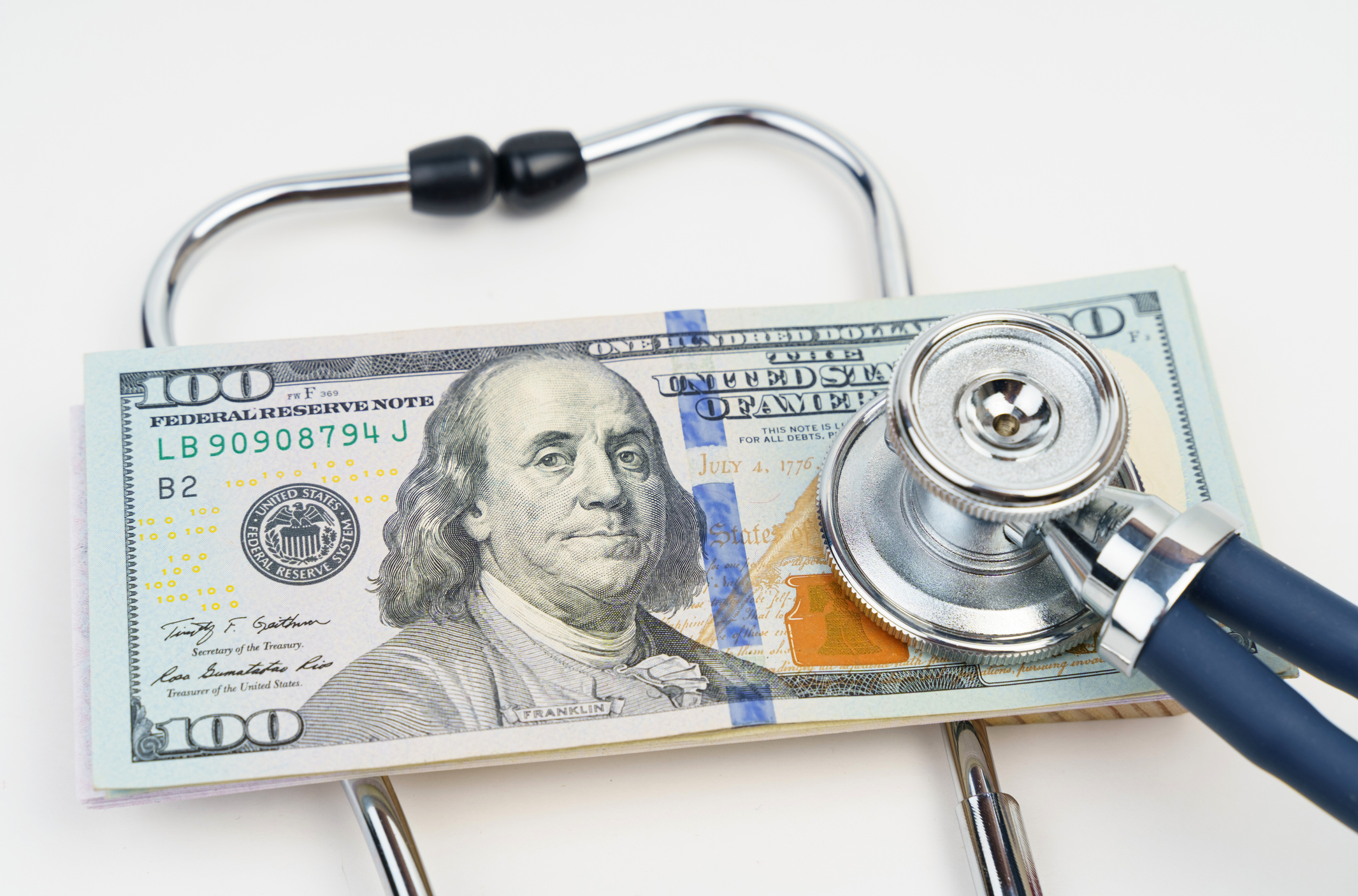Explore Changes in Treatment Costs for 115 Diseases
Dollar Value Changes 1999-2022
A new analysis of federal data by HealthCare.com shows the average cost of treating disease in the United States rose 60% from 1999 to 2022.
The Bureau of Labor Statistics tracks the costs to treat 115 diseases that make up its Disease Based Price Indexes. While many diseases have grown much costlier to treat, others have actually gotten cheaper.
Above, explore changes in treatment costs, defined as “the average expenditure for all medical services used to treat a specific medical condition.” Below, read our findings on which diseases have gotten pricier to heal, which have gotten cheaper, and why these changes have occurred.
Key Findings
- The average cost of treating disease rose 1.6 times from 1999 to 2022
- Intestinal infections rose the most, costing 4.3 times more to treat in 2022
- Diabetes with complications declined the most, dropping to 0.2 in 2022 against a base treatment cost of 1 in 1999
- Among disease categories, “symptoms; signs; and ill-defined conditions” grew the most in treatment cost, rising 2.4 times by 2022
- Among disease categories, cancer saw the most decline in treatment cost, dropping to 0.9 times what it cost to treat in 1999
Which Diseases Grew Most in Treatment Cost?
Among the diseases that make up the index, intestinal infections, including common bugs like E. coli, have seen the most growth in treatment cost. The price to treat intestinal infections rose 4.3 times by 2022 against the base index of 1 in 1999, jumping from an average of $134 to $570.
“This is consistent with more severe infections becoming relatively more common,” explains Brett Matsumoto, a research economist at the Bureau of Labor Statistics. “For intestinal infections, the increase in utilization appears to be driven by an increase in inpatient hospitalizations and emergency room visits.”
The top five diseases to see the greatest percentage growth in cost include:
- Intestinal infections ($134 to $570, up 4.27 times)
- Tonsillitis ($392 to $1,644, up 4.19 times)
- Diseases of the mouth excluding dental ($76 to $317, up 4.16 times)
- Head, neck, and trunk wounds ($146 to $595, up 4.08 times)
- All other digestive diseases ($1,492 to $5,736, up 3.85 times)
Three out of five diseases to see the greatest percent growth are conditions of the digestive system.

Which Diseases Declined the Most in Treatment Cost?
Diabetes with complications saw the most decline in treatment cost. Along with other conditions grouped with diabetes, the disease plunged almost 80% in cost to treat by 2022. In dollar terms, that’s a drop from $1,424 to $314 to manage one of the world’s most common illnesses.
Various factors can drive cost declines. One key element is lower utilization of healthcare services and drugs for the average case.
“This can be due to the average case becoming less severe over time,” Matsumoto says. “For example, if minor cases are more likely to be diagnosed and receive treatment, then the average utilization for those who receive treatment decreases, and the disease-based price indexes show this as a price decline.”
It’s also possible that treatments could become less intensive due to technological advances leading to treatments being performed in less intensive settings, such as inpatient instead of outpatient.
“On a population basis total spending is going up significantly, but on an individual basis you have people who are not using that much medicine or treatment.”
Harvard health economist David Cutler
It can also be the case, Matsumoto notes, that changes in medical coding over time can shift the average severity of a particular diagnosis. For example, an individual who used to be diagnosed with diabetes without complications is later diagnosed as having diabetes with complications.
“Milder cases lead to less intensive treatments,” describes Harvard health economist David Cutler, who also served as Senior Health Care Advisor for the Obama Presidential Campaign. “On a population basis total spending is going up significantly, but on an individual basis you have people who are not using that much medicine or treatment.”
The five diseases that dropped the most by percent in cost to treat are:
- Diabetes with complications ($1,424 to $314, down 0.22 times)
- Heart attack ($10,250 to $4,047, down 0.39 times)
- Arterial blood clot ($5,735 to $2,995, down 0.52 times)
- Anemia ($1,209 to $725, down 0.6 times)
- Acute bronchitis and other types of lung disease (($1,668 to $1,120, down 0.67 times)
Two out of five are circulatory illnesses, another involves blood, while diabetes is also a risk factor for circulatory disease.
“The number of people having heart attacks and strokes is way down,” Cutler says. “Part of that is because we have much better preventive care. That’s a huge factor in medical care: the ability to prevent and treat cardiovascular events. And that’s having a huge effect on spending.”
Explore Changes in Treatment Costs for 115 Diseases
Price Index Changes 1999-2022
Which Category of Disease Grew Most in Treatment Cost?
The disease category to experience the most growth in treatment cost is “symptoms; signs; and ill-defined conditions.” In January 2022, this category cost 2.4 times what it cost to treat in the base year 1999.
The next priciest category is dental diseases, which grew 2.2 times more expensive to treat, followed by injury and poisoning (2.18 times), infectious and parasitic diseases (2.16 times), and genitourinary diseases (2.15 times).
Which Category of Disease Dropped Most in Treatment Cost?
Cancer was the only disease category to witness an easing in treatment costs over the past two decades. Taken together, cancers in 2022 cost 0.9 times what it cost to treat them in the base year 1999.
“On the one hand, a number of cancers have become much more expensive. For example, new chemotherapies can cost hundreds of thousands a year,” ” Cutler says. “On the other hand, many cancers are down, particularly if you get into things like colonoscopies reducing the need for colon cancer surgery because people are not developing colon cancer.”
Following cancer as the disease categories to see the lowest treatment cost increases are: mental disorders (up 1.05 times), circulatory diseases (up 1.1 times), blood diseases (up 1.3 times), and complications of pregnancy/childbirth (up 1.5 times).
Disease Category Comparison
Conclusion
Overall, the average cost of treating all diseases in the index rose 1.6 times from 1999 to 2022. Considering America’s over $4.1 trillion in healthcare spending – 20% of our economy and by far the most of any country – that increase represents a lot of money.
Still, Cutler sees a silver lining. “The single biggest takeaway is that the substitution of some things for other things, that, in general, are cheaper, has really made a big difference in what we think about the cost of medical care,” he believes.
“So if you can invent a drug that substitutes for a hospitalization, that’s going to be a reduction in the cost of treating the disease. It’s still going up, but there are fewer people needing things.”




